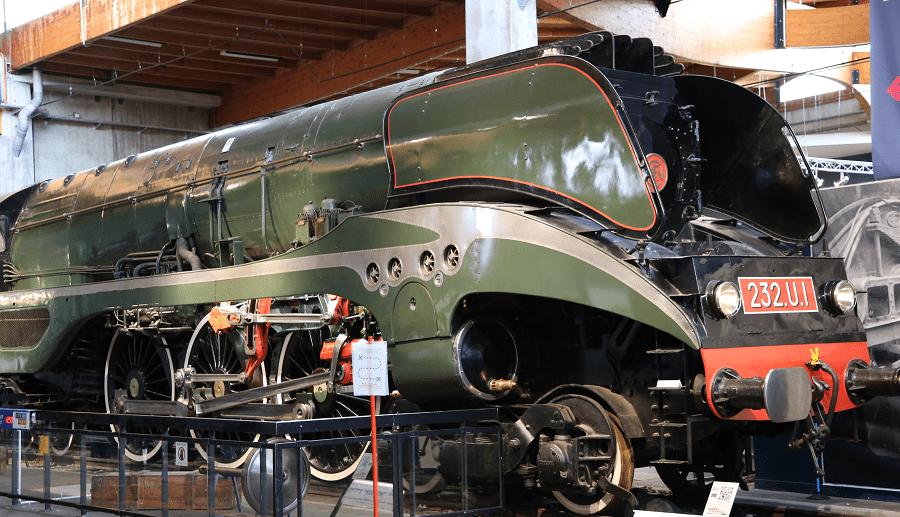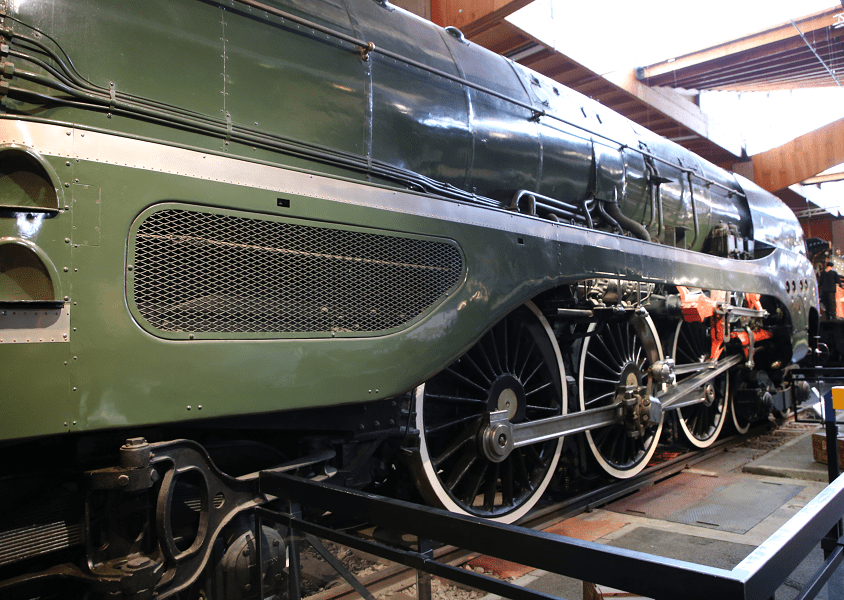The French steam locomotive Hudson 232 U1 from 1949.
Under the Whyte notation for the classification of locomotives, 4-6-4 represents the wheel arrangement of four leading wheels, six powered and coupled driving wheels and four trailing wheels. In France where the type was first used, it is known as the Baltic while it became known as the Hudson in most of North America.
The locomotive was first built as part of an order with the Société Alsacienne de Constructions Mécaniques in 1935. Construction was delayed by the war and wouldn’t continue until 1949 when the unit was completed by Corpet-Louvet, incorporating a number of upgrades. This particular locomotive worked the Paris-Lille mainline from 1949 to 1961.
It was built as part of a new locomotive program designed for the Chemins de Fer du Nord that was delayed by the outbreak of the Second World War. Its particular design distinguishes it in the small series of delivered machines, which makes it a unique model. Delivered in 1949, it was retired from service in 1961. It has since been restored and is now preserved at the Cité du Train museum in Mulhouse, where it is fired up every 20–30 minutes in a display showing how connecting rods work to propel the locomotive.
Tender type: SNCF 36.B
Fuel type: Coal
Fuel capacity: 11.5 tonnes (11.3 long tons; 12.7 short tons)
Water cap: 36,000 litres (7,900 imp gal; 9,500 US gal)
Maximum speed: 140 km/h (87 mph)
Power output: 2,430 kW (3,260 hp)













